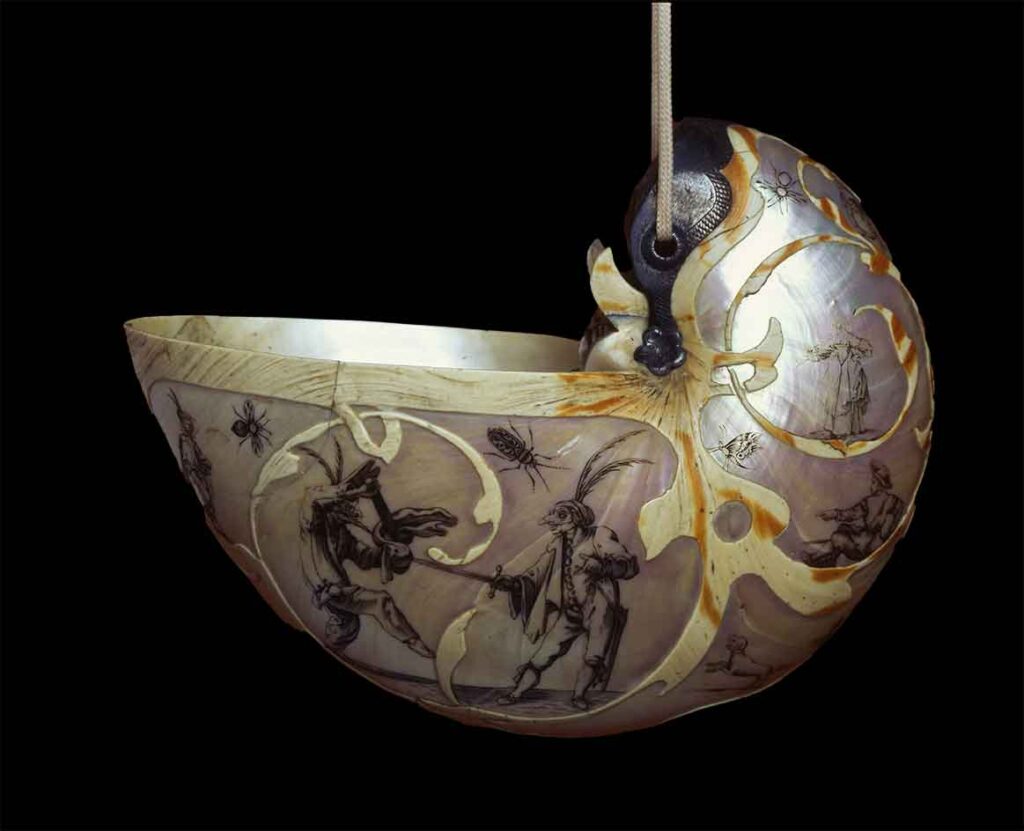Nautilus
The Netherlands , 1640 - 1660
Description

The nautilus is a shell of a rare species that lives in the seas of Indonesia, the Philippines, and New Guinea. These very fragile shells, embellished with engravings, were hung or used as cups supported by fine mounts. The exotic provenance, along with the fragility and delicacy of the decoration, made them one of the most coveted objects among collectors. The Poldi Pezzoli’s nautilus shows genre scenes, taken from engravings by Jacques Callot, amid volutes and racemes, around which insects drawn from contemporary Flemish repertoires flutter. On the edge of the shell, in engraved and pierced silver, appear the holes for suspension and, between volutes and leaves, a two-headed eagle and a coat of arms. This is a work produced by the Amsterdam manufactories in the mid-17th century, probably for a prestigious Habsburg commission.
Data Sheet
Author
The Netherlands
Date
1640 - 1660
Material and technique
shell, ink, silver
Measures
133 mm x 185 mm
Acquisition
Gian Giacomo Poldi Pezzoli bequest, 1879
Inventory number
0784
location
Dante Stydy
This cozy room, accessed from the Murano Glass Room, formerly the bedroom of Gian Giacomo Poldi Pezzoli, was the collector’s small private study. It is one of the most fascinating spaces in the Museum, the only and valuable example left of the original wall decoration. The Dante Study, designed by Giuseppe Bertini together with Luigi Scrosati, is one of the earliest European examples of historicist revival. The wall paintings, furnishings, and stained-glass windows are inspired by Dante’s Middle Ages. The small room, where Poldi Pezzoli had already collected the most precious works of his Wuderkammer, houses some of the house’s original furnishings.
collection
Jewellery
Gathered in the Jewellery Room, there are sacred items, enamels, jewels, objects de vertu that create a collection heterogeneous and the same time unique for its rarity and high quality. Among the highlights, Medieval Limoges enamels, works by Renaissance Lombard goldsmiths, 16th century jewels, 19th century parures by Fortunato Pio Castellani.
